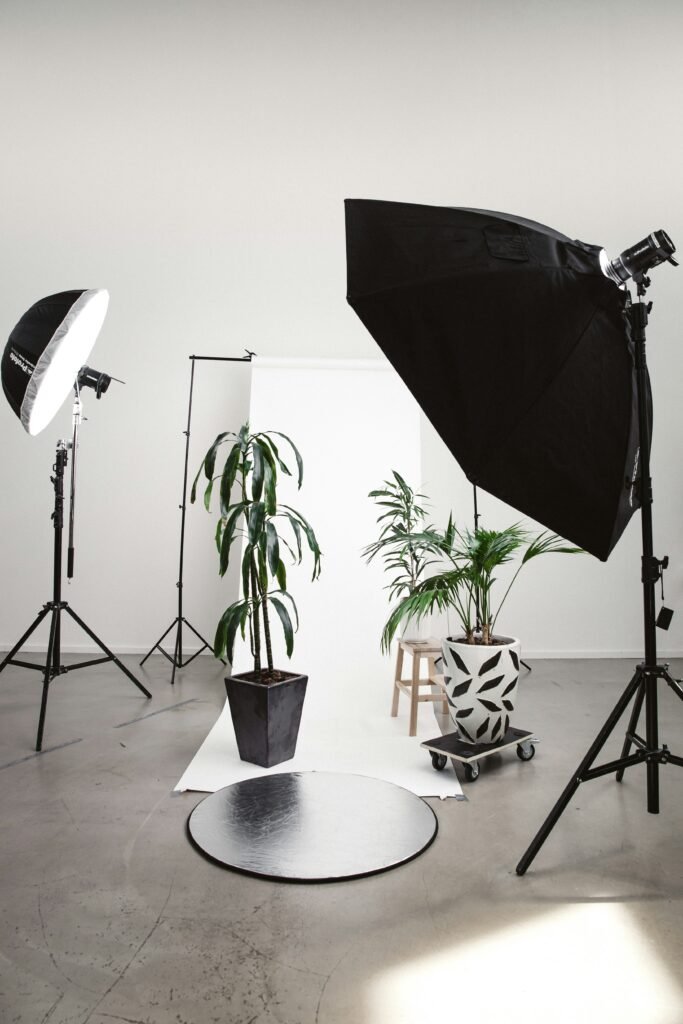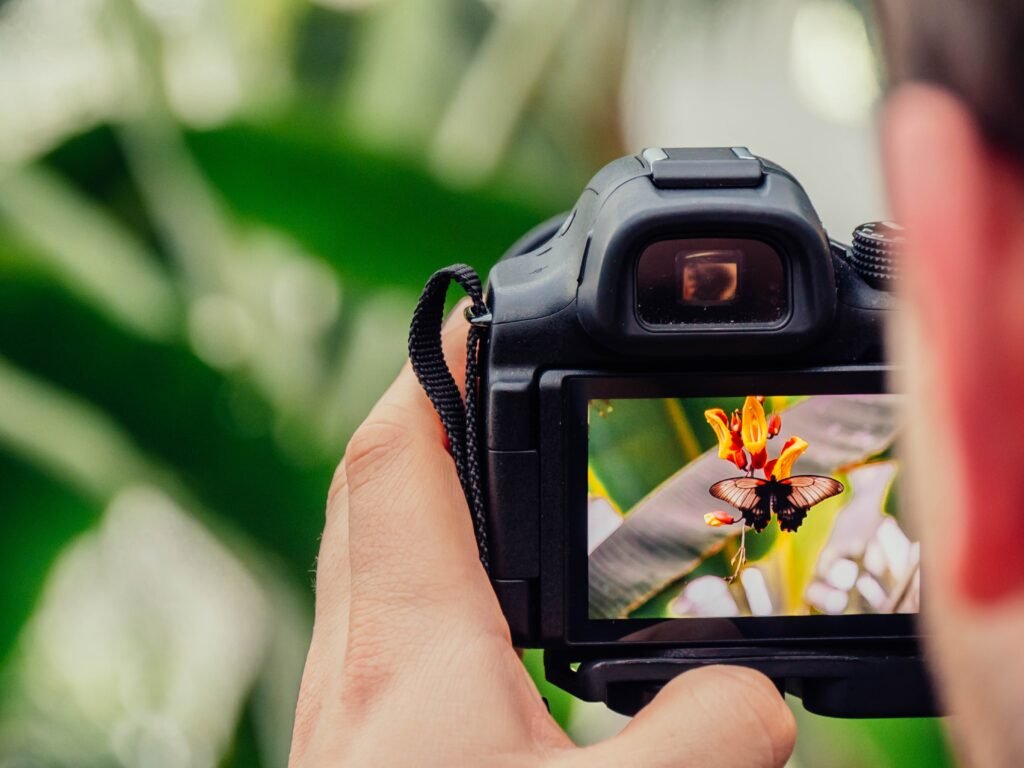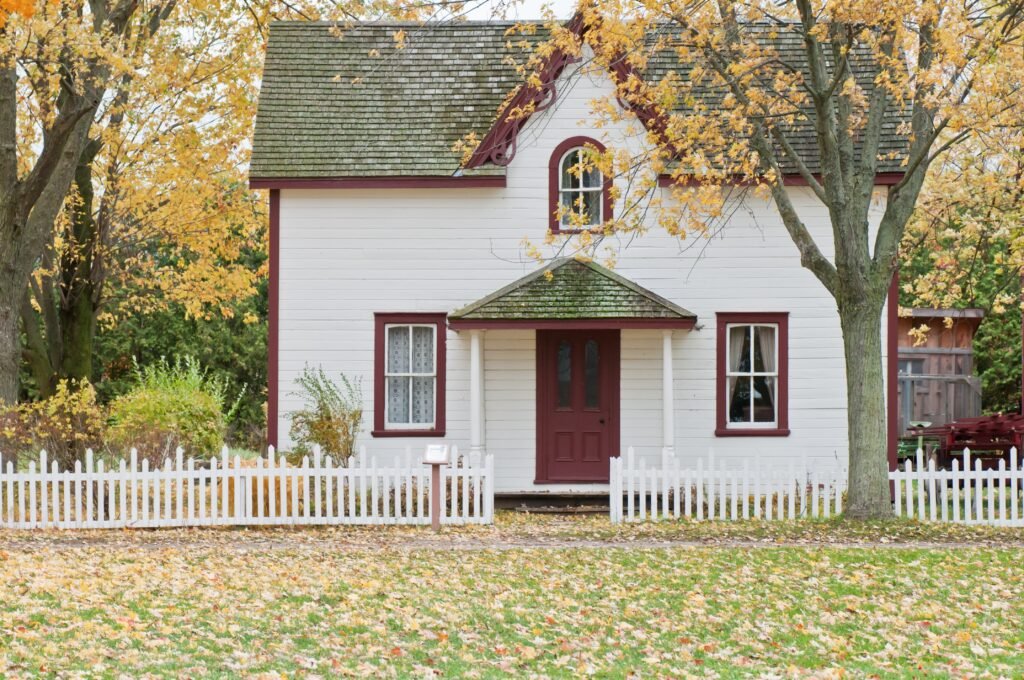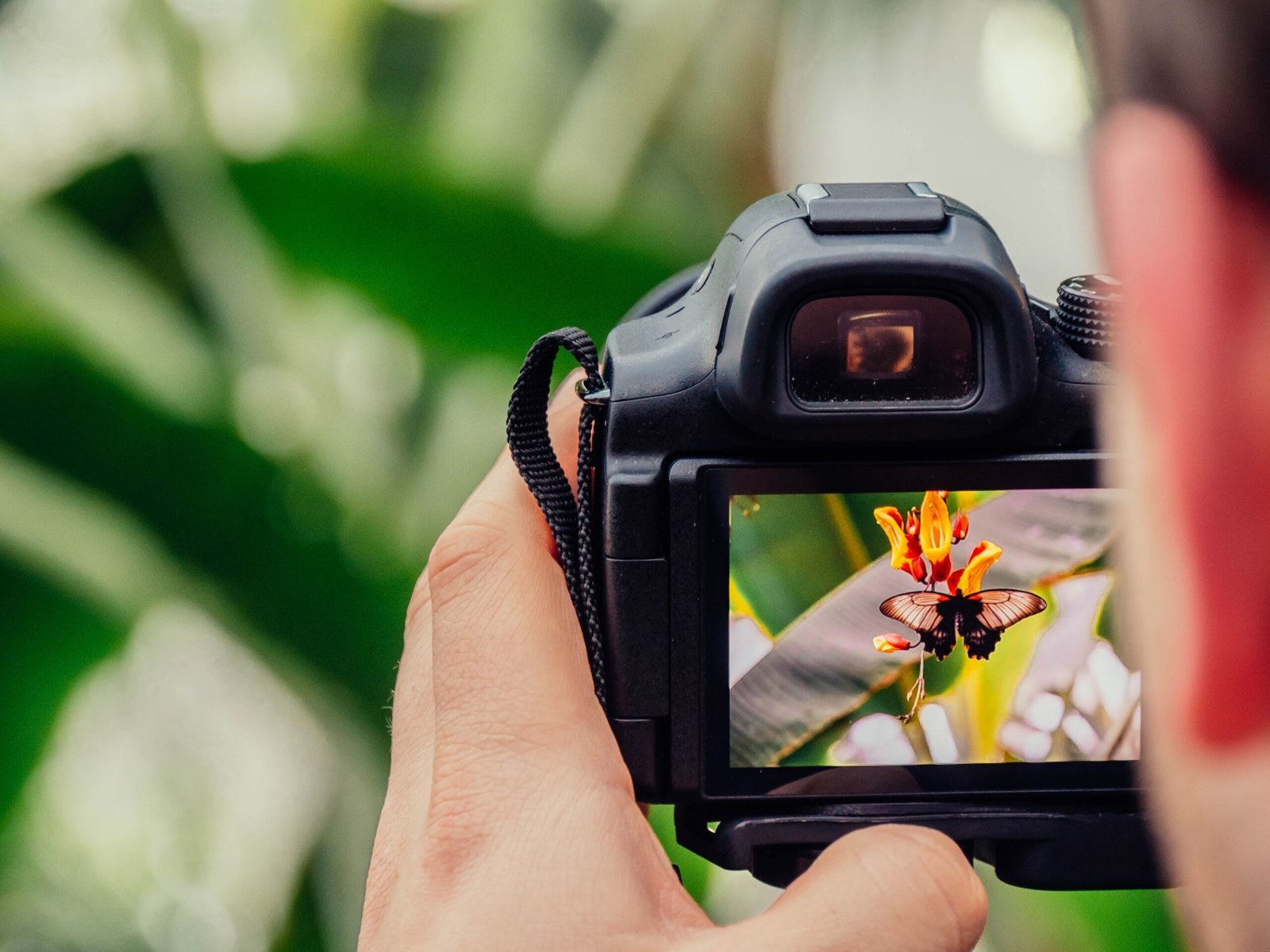In this article, we will take you on a journey through the world of real estate photography. Whether you are a professional photographer looking to specialise in this field or a homeowner trying to capture the essence of your property, we have got you covered. From essential equipment to composition techniques, we will provide you with all the tips and tricks you need to capture the perfect shot that will make potential buyers fall in love with your property. So grab your camera and get ready to elevate your real estate photography skills to new heights!

Understanding the Basics of Real Estate Photography
Real estate photography involves capturing high-quality images of properties for sale or rent. It aims to showcase the features and appeal of the property in a visually appealing way. By understanding the basics of real estate photography, you can effectively capture the perfect shot that will attract potential buyers or renters.
What is Real Estate Photography?
Real estate photography is the art of capturing images that effectively showcase a property’s interior and exterior. It goes beyond just taking snapshots – it involves careful composition, lighting, and attention to detail to create visually stunning images. The goal is to showcase the property in the best possible way, highlighting its unique features and creating an emotional connection with potential buyers or renters.
Importance of Professional Real Estate Photography
Professional real estate photography plays a crucial role in marketing a property. High-quality photos can make a significant difference in attracting potential buyers or renters. When browsing online listings, visually appealing and well-composed images have the power to catch people’s attention and inspire them to take the next step in considering the property. Professional real estate photography not only helps to sell or rent properties faster but also allows agents and sellers to ask for higher prices.
Equipment Needed in Real Estate Photography
Having the right equipment is essential for capturing exceptional real estate photos. Here are the key components you’ll need:
Choosing the Right Camera
Investing in a good-quality camera is crucial for real estate photography. Look for a camera with a high resolution, full-frame sensor, and manual control options. These features allow you to capture sharp, detailed images with excellent dynamic range. It’s also important to consider the camera’s low-light performance and noise characteristics, as some properties may have challenging lighting conditions.
The Importance of the Correct Lens
Choosing the right lens is equally important as the camera itself. Wide-angle lenses, such as a 16-35mm or 10-24mm, are commonly used in real estate photography. They allow you to capture more of the space in a single frame, making rooms appear more spacious. Additionally, consider investing in a tilt-shift lens for correcting perspective distortion and capturing straight lines.
The Role of Tripods
Using a tripod is essential for real estate photography. It provides stability and allows you to shoot at slower shutter speeds without camera shake. This is particularly useful when photographing interiors with low lighting conditions. A sturdy tripod also ensures consistent composition and sharp images.
Understanding Lighting Equipment
Proper lighting is crucial for capturing well-exposed and appealing real estate images. Along with natural light, you may need to use additional lighting equipment to control the lighting in various situations. This can include using flashguns, strobes, or continuous lighting to fill in shadows, balance ambient light, or add depth and dimension to the image.
Use of Drones in Real Estate Photography
Drones have revolutionized real estate photography by providing unique perspectives and aerial images of properties. They allow you to capture stunning aerial shots, showcase the property’s surroundings, and highlight its geographical features. However, it’s important to understand and follow local regulations and guidelines when using drones for commercial purposes.

Preparing for the Shoot
Proper preparation is key to a successful real estate photography shoot. Here are some essential steps to take:
Preparing the Property
Before the shoot, collaborate with the property owner or agent to ensure the property is clean, clutter-free, and well-staged. Clear any personal items, remove unnecessary furniture or objects, and tidy up all rooms and outdoor spaces. Presenting the property in its best condition will contribute to more appealing photos.
Choosing the Right Time of Day
The time of day can greatly impact the lighting and mood of your photos. In general, shooting during the “golden hours” – shortly after sunrise or before sunset – can create warm, soft lighting and long shadows that add depth to your images. However, every property is different, so consider the property’s orientation and the direction of natural light before determining the best time to shoot.
Scouting the Property for Best Angles
Before you start shooting, take some time to explore the property and identify its most appealing features. Look for unique architectural details, well-maintained landscaping, and any standout selling points. Experiment with different angles and perspectives to highlight these features effectively.
Preparation Checklist for Real Estate Shoots
Create a checklist to ensure you have all the necessary equipment and accessories on hand during the shoot. This can include extra batteries, memory cards, lens cleaning supplies, and any specific props or tools required for staging. Being prepared will help streamline your workflow and maximize efficiency during the shoot.
Camera Settings for Real Estate Photography
Configuring your camera correctly is crucial for achieving well-exposed and balanced real estate photos. Pay attention to the following settings:
Understanding Exposure
Proper exposure is essential in real estate photography to capture all the details in both the shadows and highlights. Utilize manual mode to have full control over your exposure settings. Consider using the histogram to check for proper exposure and avoid overexposed or underexposed areas within the frame.
Importance of White Balance
Getting the white balance right is crucial for accurate color representation in your real estate photos. Aim for neutral colors, especially when it comes to interior shots. Consider using a custom white balance setting or adjusting it in post-processing to ensure accurate and appealing colors.
Focus and Depth of Field
In real estate photography, it’s generally desirable to have a large depth of field to ensure that the entire room is in focus. To achieve this, use a smaller aperture (higher f-number) such as f/8 or f/11. However, be careful not to use too small of an aperture, as it can lead to diffraction and loss of sharpness.
The Role of ISO in Low Light
In low-light situations, it may be necessary to increase the ISO to maintain a properly exposed image. However, be mindful of noise levels that higher ISO settings can produce. Test your camera’s capabilities and find the ISO threshold where noise becomes distracting, and try to stay below that threshold whenever possible.

Composition in Real Estate Photography
Composition plays a significant role in creating visually appealing real estate photos. Here are some techniques to consider:
Basics of Composition
Composition refers to how elements are arranged within the frame. Aim for well-balanced and visually pleasing compositions. Consider the rule of thirds, leading lines, and the use of symmetry or patterns to create impactful images.
Rules of Thirds in Real Estate Photography
The rule of thirds is a fundamental composition technique. Divide your frame into a grid of thirds and position key elements of the scene along these gridlines or their points of intersection. This helps create a sense of balance and visual interest.
Using Leading Lines and Patterns
Leading lines draw the viewer’s attention into the photo and guide their gaze towards the main subject. Look for lines or shapes that naturally lead towards the property or its focal points. Additionally, incorporating patterns, such as in flooring or architectural elements, can add texture and interest to your images.
Highlighting Property Features
Effective real estate photography should highlight the property’s unique features and selling points. Whether it’s a stunning fireplace, a luxurious bathroom, or expansive windows with a beautiful view, make sure to frame and compose the shot to draw attention to these elements. Use angles and perspectives that showcase the property’s best features.
Techniques for Shooting Interiors
Photographing the interior spaces of a property presents its own set of challenges and considerations. Here are some techniques to help you capture stunning interior shots:
Setting up the Room
Before you start shooting, make sure the room is clean, clutter-free, and well-staged. Arrange furniture, accessories, and other elements to create an inviting and visually appealing space. Pay attention to small details like spacing, symmetry, and overall aesthetics.
Using Natural and Artificial Light
Balancing natural and artificial light is crucial in interior photography. Utilize natural light to create a soft, warm ambiance, and supplement it with additional lighting if needed. Be mindful of harsh shadows and aim to evenly illuminate the room, while preserving the natural highlights and shadows.
Capturing Wide Angle Shots
Wide-angle shots are commonly used in real estate photography to capture the full essence of a room and make it appear more spacious. However, be cautious not to overly distort the room’s proportions. Experiment with different focal lengths and perspectives to find the right balance between breadth and realism.
Including Details in Shots
Don’t forget to capture close-up shots of key details and features within each room. These shots can showcase unique architectural elements, high-end finishes, or beautiful design touches. They add depth and personality to your portfolio and help potential buyers or renters visualize themselves in the space.
Methods for Capturing Outdoor Spaces
Outdoor spaces, such as gardens, pools, and landscapes, are important selling points for many properties. Here are some techniques for capturing captivating outdoor shots:
Capturing Curb Appeal
The exterior of the property is the first impression potential buyers or renters will have. Capture compelling shots that highlight the property’s curb appeal, including its architecture, landscaping, and any unique or standout features. Consider shooting from different angles and elevations to provide a comprehensive view.
Shooting Exterior Details
In addition to wider shots, focus on capturing close-up shots of specific exterior details that add value and character to the property. This can include architectural elements, outdoor living areas, or unique finishes. These shots help buyers or renters appreciate the craftsmanship and attention to detail.
Making the Most of Landscaping
If the property has landscaping or an outdoor space, make sure to showcase it in your photos. Capture lush gardens, well-maintained lawns, or any standout features like water features or outdoor entertainment areas. Use leading lines or framing techniques to guide the viewer’s eye towards these elements.
Using Drone Photography
Drones have become popular tools in real estate photography to capture unique aerial perspectives. They provide stunning views of the property and its surroundings, allowing potential buyers or renters to get a comprehensive sense of the location and its amenities. However, be sure to follow local regulations and guidelines regarding drone usage.
Post-Processing in Real Estate Photography
Post-processing is a crucial step in real estate photography to enhance the visual appeal of your images. Here are some important considerations:
The Importance of Editing
Editing can transform your raw images into polished, vibrant, and visually appealing photographs. It allows you to fine-tune exposure, adjust white balance, correct any lens distortions, and make other necessary adjustments to enhance the overall impact of the image.
Using Lightroom and Photoshop
Adobe Lightroom and Photoshop are popular software choices for real estate photo editing. Lightroom provides powerful tools for adjusting exposure, color tones, and applying batch edits. Photoshop offers more advanced features for retouching, blending multiple exposures, and removing distractions from the images.
Removing Distractions in Post
During the editing process, remove any distractions or blemishes that may draw attention away from the property. This can include removing power lines, unwanted objects, or reflections. Pay attention to fine details and ensure that the final image looks clean and professional.
Enhancing Colours in Editing
Color enhancement can greatly improve the aesthetic appeal of your real estate photos. Adjust the vibrancy and saturation to make colors pop, correcting any color casts or imbalances. Experiment with adjustments to find the right balance that accurately represents the property while maintaining a visually pleasing result.
Creating a Portfolio for Real Estate Photography
Building a compelling portfolio is essential for showcasing your skills and attracting potential clients. Follow these tips to create an impressive real estate photography portfolio:
Choosing Your Best Work
Curate your portfolio by selecting your best real estate photos that represent your style, skillset, and versatility. Showcase a range of properties to demonstrate your ability to capture different types of architecture, interiors, and outdoor spaces. Quality over quantity is key – include only your strongest images.
Displaying a Variety of Properties
To attract a wide range of clients, display a variety of properties in your portfolio. Include residential homes, commercial spaces, luxury properties, and any other types of real estate you specialize in. This shows potential clients that you have experience in various sectors of the real estate market.
Updating the Portfolio Regularly
Your portfolio should evolve and stay up-to-date as you gain more experience and capture new projects. Remove outdated or weaker images and replace them with your latest and strongest work. Regularly updating your portfolio shows potential clients that you are actively working in the industry and continuously improving your skills.
Including Testimonials
Testimonials from previous clients can greatly enhance the credibility of your real estate photography portfolio. Request feedback from satisfied clients and include their testimonials alongside the respective property images. These testimonials serve as social proof and demonstrate your ability to deliver high-quality work and excellent customer service.
Pricing and Marketing Your Real Estate Photography
Once you have established your real estate photography business, it’s crucial to set appropriate prices and effectively market your services. Consider the following strategies:
Setting Your Prices
Research the market rates in your area to determine competitive and fair pricing for your real estate photography services. Take into account factors such as your skill level, experience, equipment, and the local demand. Set clear pricing packages that outline what clients can expect from each option.
Marketing Your Services
To effectively market your real estate photography services, establish an online presence through a professional website and social media profiles. Showcase your portfolio, provide informative content through blog posts or tutorials, and highlight the benefits of hiring a professional photographer for real estate needs. Additionally, consider participating in local real estate events or networking with industry professionals to expand your reach.
Building Relationships with Estate Agents
Developing strong relationships with estate agents and agencies can be a fruitful strategy for getting regular photography contracts. Offer discounted rates for first-time clients, provide excellent customer service, and deliver high-quality images that help agents market their properties effectively. By delivering exceptional value, you can establish long-term partnerships and gain reliable clients.
Utilising Social Media for Exposure
Social media platforms such as Instagram and Facebook provide powerful tools for showcasing your real estate photography work and reaching potential clients. Regularly update your profiles with your latest projects, engage with your audience, and use relevant hashtags to reach a wider audience. Consider creating targeted ads or sponsored posts to further increase your visibility and attract new clients.
By understanding the basics of real estate photography, investing in the right equipment, mastering key techniques, and effectively marketing your services, you can capture the perfect shot. With patience, practice, and a keen eye for detail, you’ll be well on your way to becoming a sought-after real estate photographer in no time. Remember to always stay professional, deliver excellent customer service, and continuously improve your skills to thrive in this competitive industry. Happy shooting!
